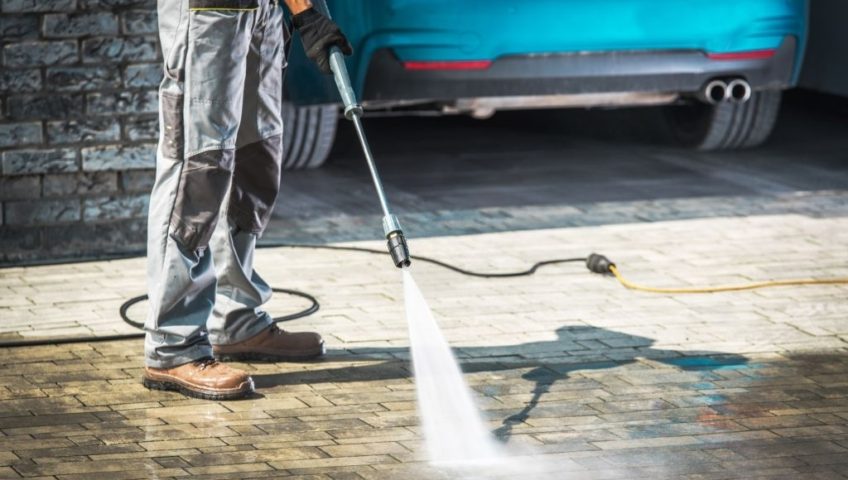
How to pressure wash a driveway?
Cement stains, including oil stains, aren’t just an eyesore; they also weaken the surface of your driveway. Stop ignoring those stains and learn how to pressure wash your driveway to keep yourself in ideal shape. Plus, we all know that a clean driveway improves curb appeal.
Do you suffer from unsightly stains on your concrete driveway? Here are some steps that will help pressure clean your driveways effectively.
Sweep the surface and Trap the Plants
Removing debris while pressure washing the driveway is just a waste of time and water. Instead, use a leaf blower to remove small debris such as leaves rocks, stems, and mulch. You can use a broom, but a leaf blower is faster and easier. Do not rush to this step and clarify as much as possible.
Try to cover plants with traps before you start pressure wash driveway. For a cost-effective and lightweight option, use painter’s plastic rollers. Remove the leaves as soon as possible to avoid overheating the plant.
Protect exterior and interior walls & Do safety precautions
Cover exterior walls and doors with plastic sheeting and duct tape. This protects the doors and walls from loose dirt, as well as paint or stains accidentally lost by the pressure washer.
Carefully read the correct steps for your specific pressure washer. Each pressure washer is different and may require special preparation, editing, or attachment. The pressure washer makes noise, water, and other dirt can splash on your face and you walk around in the soft soapy water. Always wear safety glasses, hearing protection, and closed-toe shoes that provide good grip. A powerful pressure washer can cut leather. Use with care and keep it out of the reach of children.
Choose the right nozzle and experiment on a less visible spot
The nozzles are adjusted in degrees and the lower the number, the faster and stronger the flow. Try to adjust the nozzle degree according to your surface when you are doing pressure-wash driveways.
If you hold the nozzle too close, the pressure can affect the concrete surface. The distance depends on the pressure washer’s power and the nozzle you use. Experiment on a less visible spot and see how close you can get without damaging the concrete. If the roof, sidewalls, and retaining walls need to be washed, do this first. Plan and work from the top down. Otherwise, dirty water will run off the surface and ruin your clean driveway.
Use a detergent
Detergent is very effective for cleaning concrete. It removes stubborn grease, paint, and dirt. There are many great options available in the market. Newer pressure washers often include a soap dish for applying detergent.
Rotate the rod back and forth about 8 inches from the surface to create a fine foam. Leave on for 10 minutes and then rinse. Do not pour bleach or other chemicals into the pressure washer’s soap tank.
Treat the stains
Before cleaning the entire surface, remove all oil stains. Try to saturate these spots with diluted concrete cleaning solution from a spray bottle. Ensure a good clean by spraying the concrete with a spray bottle of degreaser, at 15 cm from the surface.
Leave the cleanser on for 10 minutes and Scrub the degreaser into the concrete with a stiff brush or pressure washer. Then rinse it off in a pressure washer. Some stains are difficult to remove, paint stains clean them quickly, but grease and rust stains take longer. If the stain doesn’t go away, treat it a few more times with a more dilute solution.
Start at the top and work on small sections
Start at the top and work your way down. You don’t want dirty water flowing where you just cleaned. Also, be sure to park the pressure washer near the highest point so that it drags the pipe behind you, rather than pushing it constantly.
If you spray the entire surface with soap at once, the soap will settle and dry before you can wash it, which can leave marks. Try to divide the whole surface into smaller sections and then clean it.
Seal the Concrete
Pour the waterproof sealant into the paint pan, add the roller cover to the roller handle, connect the extension rod. Next, starting from the center of the area, apply a waterproof sealant from the center to the entire edge of the concrete. Wait 24 hours before parking on the surface.
